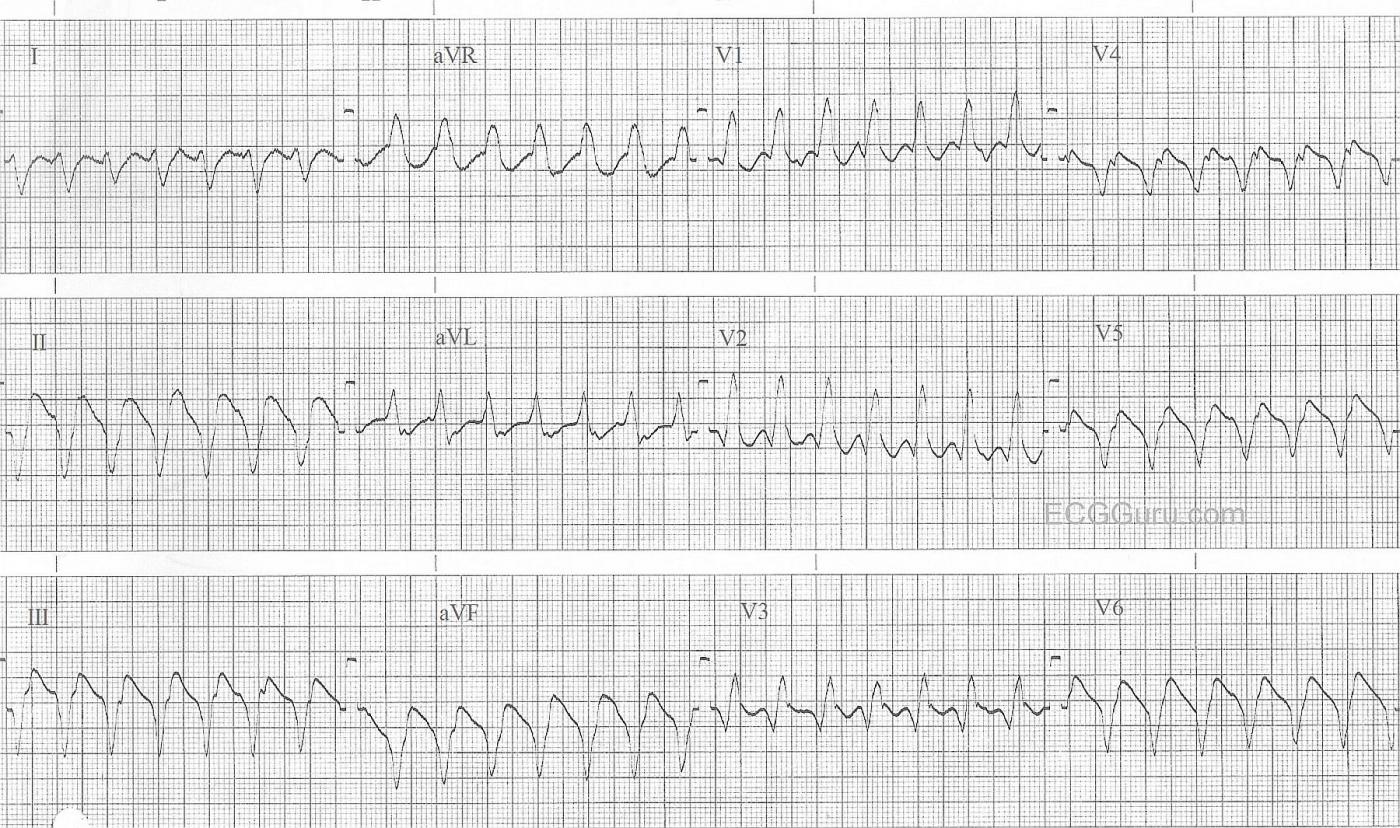This wide-complex tachycardia is ventricular tachycardia. Along with the wide QRS and the fast rate, features which favor a diagnosis of VT over BBB include: backwards (extreme right) QRS axis, negative QRS in V6, and an apparently monophasic QRS in V1, as opposed to the rSR' pattern of right bundle branch block.
Remember, ALL wide-QRS tachycardias should be treated as V Tach until proven otherwise, as it is a life-threatening arrhythmia. Factors which lower cardiac output during V Tach include: Fast rate, wide QRS, and lack of P wave preceding the QRS. The sudden severe lowering of perfusion that usually accompanies V Tach can lead to rapid deterioraton and ventricular fibrillation.
For discussions by Jason Roediger (ECG GURU extroidonairre) on recognizing ventricular tachycardia, go to this LINK, and this LINK.
All our content is FREE & COPYRIGHT FREE for non-commercial use
Please be courteous and leave any watermark or author attribution on content you reproduce.



Comments
99+% Likelihood of VT
I would interpret the ECG in the above Figure as follows:
For full Review of the above Criteria — Please check out my ECG Blog #42 (GO TO — http://tinyurl.com/KG-Blog-42 ).
Ken Grauer, MD www.kg-ekgpress.com [email protected]